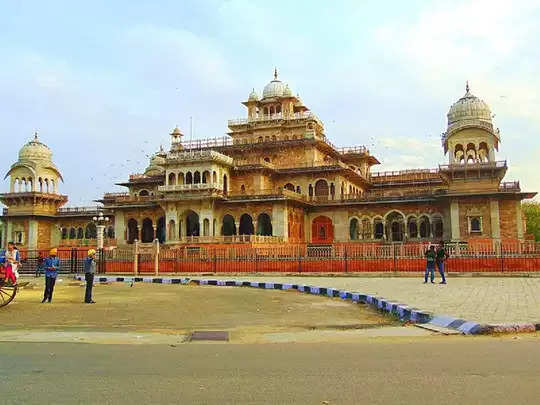Experts come from abroad to take care of this thousands of years old dead body of Jaipur, watch the shocking video.
Rajasthan News Desk!!! You will also agree with this that old things have a different importance. History and its information always attracts our mind. In the pink city of Jaipur, there is such a unique center of world history which reveals to us many secrets not only of Rajasthan or India but also of the oldest civilizations of the world.
The 150 year old Albert Hall, located in the center of Jaipur city, holds within itself the secrets of the world's oldest civilization, Egypt, combined with the history of Rajasthan and the architecture of the British, which will surprise you. The main attraction here is the twenty-three hundred year old mummy brought from Egypt, this mummy belongs to Tutu, a woman from the priest family of the Egyptian royal family, many of whose remains are still safe.
We are talking about Albert Hall, the largest and oldest museum of Jaipur, which was built by Maharaja Ram Singh. Standing as an example of Indo-Saracenic architecture, the building was named after the Prince of Whales, Albert Edward. Decorated with lush gardens, the foundation stone of Albert Hall was laid on 6 February 1876, when Albert Edward visited India. The galleries of the museum have a collection of antiques and artefacts from the past that will leave you awestruck. It houses ancient coins, marble art, pottery, carpets and especially the Egyptian mummy, which is one of the most attractive places to visit in Jaipur for history buffs as well as tourists. Let us introduce you to the history, architecture, structure of Albert Hall Museum, when and who built it and the best time to visit it.
The history of Albert Hall in Jaipur is almost 150 years old, the foundation of which was laid on 6 February 1876 during the visit of Prince of Wales Albert Edward to Jaipur. And this building has been named after him only. Maharaja Sawai Ram Singh wanted Albert Hall to be a town hall, while some ministers suggested using it for cultural or educational use. After which, on the suggestion of Maharaja Sawai Madho Singh II, it was made a temporary museum in 1881 to showcase the art of local artisans. The construction of Albert Hall was completed in 1887 by Samuel Swinton Jacob, Director of Jaipur PWD. It was formally inaugurated by Sir Edward Bradford in 1887. Approximately Rs 5,01,036 was spent in building this magnificent building. In the year 2008, the biggest reconstruction of this museum till date was done.
Albert Hall is a magnificent example of Indo Saracenic architecture. The corridors of which are decorated with murals in a variety of styles, depicting European, Egyptian, Chinese, Greek and Babylonian civilizations. Ancient coins, marble art, pottery, carpets and especially mummies brought from Egypt are kept here. The Albert Hall contains several intriguing galleries, displaying objects and treasures ranging from antiquity to the nineteenth century. So let's go inside the Albert Hall Museum and start turning the pages of history, where Tutu's mummy attracts us the most.
Egyptian Mummies One of the most prestigious historical collections in the museum is the Egyptian Mummies, which attracts tourists. This mummy gives us very important information about the pyramids of Giza, the Nile River civilization and the amazing process of preserving dead bodies in the form of mummies in ancient Egypt. The twenty-three-year-old mummy kept here is that of Tutu, a woman from the priestly family of the Egyptian royal family, which was converted into a mummy in the time of 322 BC. This mummy was brought to Jaipur from Cairo city of Egypt by the British government in the year 1880 in the 19th century. Along with Tutu's mummy, 399 historical objects related to Egyptian civilization were also brought to Jaipur. Which displays the gods and goddesses, civilization, food, costumes and customs of Egypt.


Comments are closed.